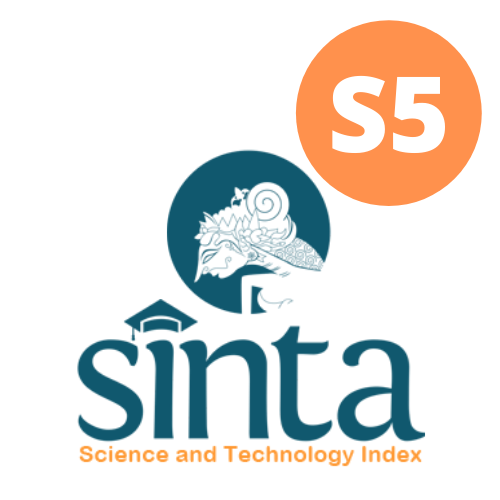Effectiveness and Efficiency of Using Shared Networks Using Thin Clients to Reduce Office Network Load
Abstract
The use of networks in conjunction with thin client systems has become an alternative solution for increasing the efficiency of information technology infrastructure in office environments. Several previous studies have examined the benefits of using thin clients, including cost efficiency, data security, and reduced system administration burden. For example, using thin clients can reduce bandwidth consumption compared to using conventional PCs on a local office network. Another study also stated that thin client systems can extend hardware lifespan and significantly reduce total cost of ownership. These studies emphasize the significant potential of using thin clients in creating more efficient and manageable networks. This study aims to test the effectiveness and efficiency of using a thin client-based shared network in a medium-sized office. The methods used were quantitative studies and field experiments, observing network load (bandwidth usage), server performance, and application response times between conventional PC and thin client. The results showed a 78,35% reduction in network load. In conclusion, this study demonstrates that the use of networks combined with a thin client approach not only reduces network load technically but also has a long-term impact on organizational efficiency, device sustainability, and adaptability to more resource-friendly technological developments.
References
[2] Rahmatzai, Sibghatullah & Samadzai, Abdul Wahid. (2025). Thin Client Technology Implementation Challenges for Computer Labs in Public Universities (Afghan Case Study). INTERNATIONAL JOURNAL OF MULTIDISCIPLINARY RESEARCH AND ANALYSIS. 08. 10.47191/ijmra/v8-i02-28.
[3] Kumar, Rupesh & Yadav, Arun & Verma, H. (2021). An analysis of Approaches for Desktop Virtualization and Challenges. International Journal of Scientific Research in Science and Technology. 600-612. 10.32628/CSEIT2174133.
[4] Kristiyanto, Y., Sismadi, W., & Susanto, Y. (2024). Implementation of Zero Client Network Using vCloudPoint at PT XYZ with Action Research Method. RISTEC: Research in Information Systems and Technology, 5(2), 55-66.
[5] Kristiyanto, Yogi; Sugiyono, Sugiyono. Pengembangan Jaringan Untuk Memperbaharui Sistem NComputing Versi Lawas ke Versi Terbaru Dengan Metode SDLC. INFORMATION MANAGEMENT FOR EDUCATORS AND PROFESSIONALS : Journal of Information Management, [S.l.], v. 8, n. 1, p. 71-80, sep. 2023. ISSN 2548-3331.
[6] Segal, R., Avin, C., & Scalosub, G. (2022, May). Constrained in-network computing with low congestion in datacenter networks. In IEEE INFOCOM 2022-IEEE Conference on Computer Communications (pp. 1639-1648). IEEE.
[7] Beno, Pavel & Schauer, František. (2020). THIN CLIENT IN MASSIVE RLS WITH CLOUD APPLICATION. Acta Mechatronica. 5. 7-12. 10.22306/am.v5i1.58.
[8] Josten, Malte. (2022). Green IT - Designs and Established Principles. 10.13140/RG.2.2.10247.68008.
[9] Campioni, Lorenzo & Morelli, Alessandro & Fronteddu, Roberto & Hackler, Tatum & Suri, Niranjan. (2024). Network-Aware Traffic Shaping for Information Management Systems. 1034-1039. 10.1109/MILCOM61039.2024.10773751.
[10] Taruk, Medi & Budiman, Edy & Wardhana, Reza & Setyadi, Hario & Mahendra Putra, Gubtha & Maria, Eny. (2021). Network Traffic WLAN Monitoring based SNMP using MRTG with Erlang Theory. 391-394. 10.1109/EIConCIT50028.2021.9431898.
[11] Wan Abu Bakar, Wan Aezwani & Wail, Che & Man, Mustafa. (2022). SIMULATION OF WIRELESS ESTIMATION BANDWIDTH FOR NETWORK TECHNOLOGY. Journal of Mathematical Sciences and Informatics. 2. 1-12. 10.46754/jmsi.2022.06.001.
[12] Ge, Yaozhong & Tian, Yu-Chu & Yu, Zuguo & Zhang, Weizhe. (2023). Memory sharing for handling memory overload on physical machines in cloud data centers. Journal of Cloud Computing. 12. 10.1186/s13677-023-00405-x.

This work is licensed under a Creative Commons Attribution 4.0 International License.
















